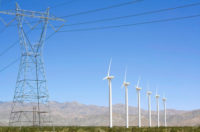Energy Projects
Clean Energy Project Tax Rules Under Climate Change Law Unveiled

Clean energy advocates described domestic content incentives outlined in long awaited Treasury Dept. rules, released May 12, as a huge opportunity to grow the US supply chain.
Photo courtesy of Markus Distelrath/Pixabay.
The Biden Administration issued long-awaited detailed information on how clean energy projects eligible for a 30% investment or production tax credit can qualify for the bonus under the new Inflation Reduction Act based on their domestic content.
The incentive is a “monumental opportunity” to grow the country’s domestic energy supply chain and unlock billions of dollars in clean energy manufacturing, J.C. Sandberg, chief advocacy officer for American Clean Power said in a statement after the May 12 release of the guidance.
The domestic content bonus credit is 10% for projects using the production tax credit and “up to a 10-percentage point bonus for projects using the investment tax credit,” the guidance says. It amounts to 0.3-cents/kWh, according to industry participants.
investment tax credit projects are eligible for the full bonus if they meet the domestic materials content requirement, and also meet one of these three conditions: Beginning construction before Jan. 29, 2023; having a maximum net output of less than 1 MW; or satisfying the law’s prevailing wage and apprenticeship requirements.
The May 12 guidance describes rules that the US Treasury Dept. and Internal Revenue Service intend to include in the forthcoming proposed regulations regarding the domestic content bonus credit requirements and related recordkeeping and certification rules, the agencies said.
To receive the bonus, projects must be built using only iron, steel and manufactured products that are made in the U.S. A minimum percentage of the cost of manufactured products and components of manufactured products in a project must come from products and components that were mined, produced or manufactured in the U.S.
The guidance provides safe harbor regarding the classification of certain components in certain types of clean energy projects or energy storage technologies.
Developers are eligible for the bonus for projects that begin construction in 2023. “The guidance also clarifies the treatment of labor costs, to ensure the focus of the incentive remains on domestic manufacturing,” PV magazine said.
"We look forward to projects moving forward under this guidance immediately,” said Gregory Wetstone, president and CEO of the American Council on Renewable Energy. Abigail Hopper, president and CEO of the Solar Energy Industries Association said more than $13 billion of new U.S. manufacturing investments have been made since Inflation Reduction Act passsage.
But one U.S. trade group representing solar project component manufacturers, noted that panels used would qualify for a 10% tax credit under the law, despite use of key polysilicon wafers that still are 95% imported from China.
The Treasury announcement "will likely result in the scaling back of planned
investments in the critical areas of solar wafer, ingot, and polysilicon
production,” said Mike Carr, executive director of the Solar Energy Manufacturers for America Coalition, in a statement. “As long as the U.S. does not have an end-to-end solar manufacturing supply chain of all the core components of a solar panel, there is more work to be done.”




